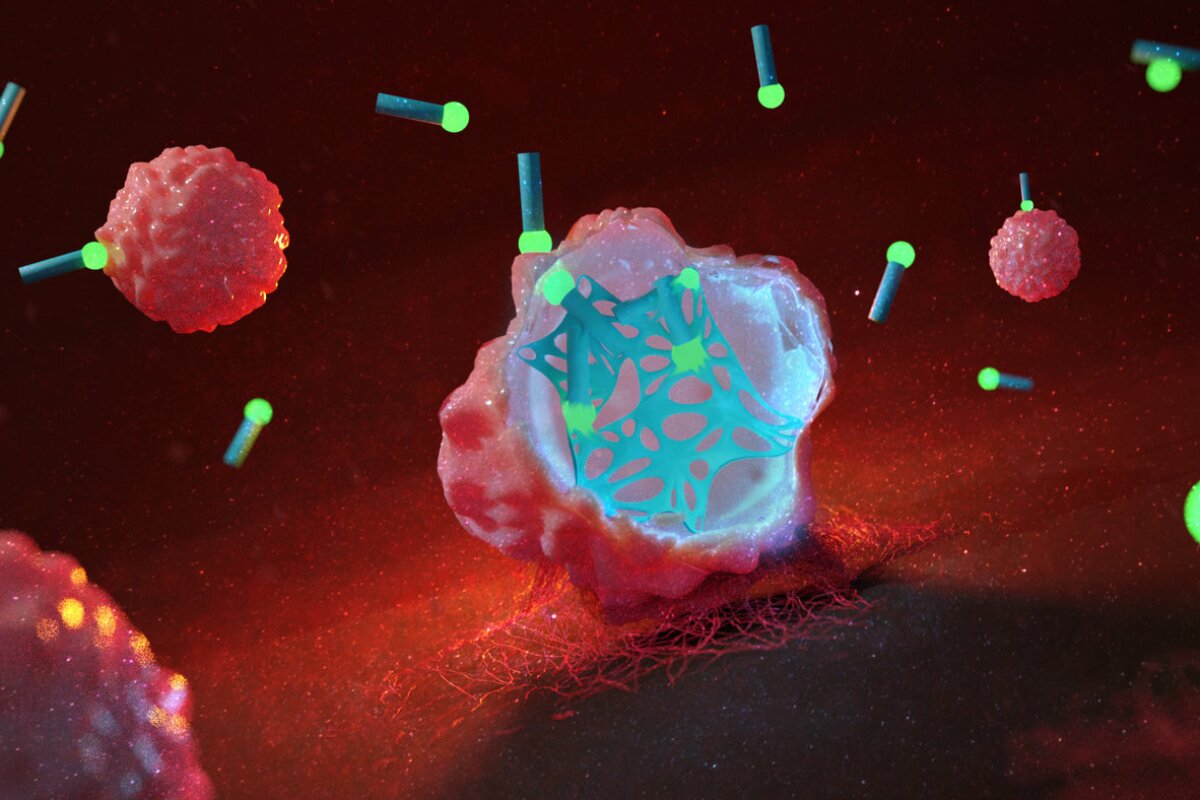Researchers at the Max Planck Institute have demonstrated an intriguing new way to fight cancer by introducing molecular fibers into cells. While harmless to healthy cells, once these fibers encounter the specific environment of cancer cells they assemble into webs, activating the tumor’s self-destruct sequence.
Currently, our best weapons against cancer are radiation and chemotherapy, and while reasonably effective they both act more like a shotgun blast than a sniper shot, harming healthy cells at the same time. That causes all sorts of side effects to a patient’s health.
As such, a key avenue of cancer research involves finding ways to specifically target tumors without harming the healthy cells around them. One of the best ways to do that is to take advantage of the unique environment inside cancer cells, and that’s what the new study has tried to do.
"In cancer tissue, the environment is much more acidic than in normal tissue," says David Ng, lead researcher on the study. "In addition, much more highly reactive oxidative molecules are found within the cancer cells due to the cancer's increased metabolic activity - and we take advantage of that.”
To do so, the team created molecular fibers that would theoretically be introduced to a patient’s body, entering both healthy and cancerous cells. These fibers are made up of sequences of peptides that cleave and connect in different patterns based on the environment they encounter. While harmless to healthy cells, they turn lethal when they encounter the features that mark cancer tissue – acidity and more reactive oxidative molecules.
Once exposed to that environment, the fibers begin to join together, forming a web-like structure that grows inside the cancer cell itself. The team says that these webs are stable enough to physically deform the cell, to the point where they trigger programmed cell death.
The researchers point out that this method leaves healthy cells alone, and attacks the cancer in a way that it can’t defend itself against. That bypasses a common problem with chemical attacks, which many tumors develop resistance to.
In tests on lab cultures of cancer cells, the team demonstrated that the method was able to kill the tumors in around four hours.
It’s still very early days for the research, with the method yet to be tested in animals, let alone humans. In the meantime, the team is working on making the process more precise and developing a way to degrade the webs after the cancer cells have died off.
The research was published in the Journal of the American Chemical Society.
Source: Max Planck Institute




